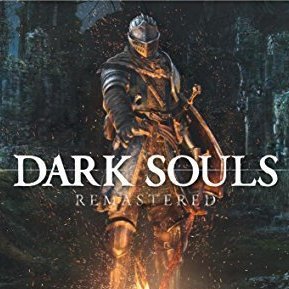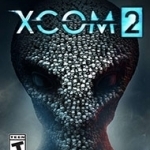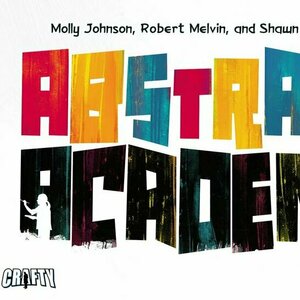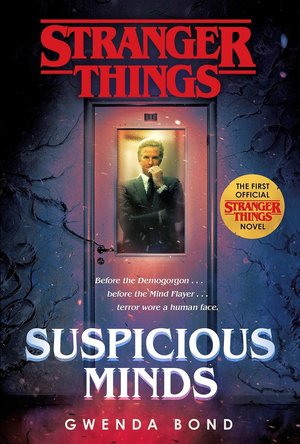
ASAP54 Search and Shop for Fashion
Shopping and Lifestyle
App
ASAP54: Welcome to your go-to search tool for fashion! Here to solve your search for your next...
Gareth von Kallenbach (980 KP) rated the PlayStation 4 version of Dark Souls Remastered in Video Games
Aug 14, 2019
For those of you who have led a sheltered life, Dark Souls is a third-person action role-playing game developed by FromSoftware. It was the successor to their previous game Demon Souls (which was a PS3 exclusive) and carried over much of the game mechanics. The game takes place in what I call a semi-open world environment connected to a central area. You are free to travel to and from areas at will, although some areas will be inaccessible until you complete specific tasks. Bonfires act as checkpoints for each level, and at a bonfire the player can heal, refill their healing flasks, and level up if they have collected enough souls to do so. The downside to resting at a bonfire is that it resets the enemies, so areas that you worked hard to clear out must be cleared out again. The game is lauded for its difficulty, and for players to learn from previous mistakes to overcome obstacles, present company excluded of course.
The release of Dark Souls Remastered was an effort to address many of the shortcomings of the original from a purely control and aesthetic point of view. I was lucky enough to review the game on my Xbox One X and the new 4K visuals and lighting effects are truly a site to behold. The world while still dark and dreary, now boasted cleaner lines. While it’s difficult to describe how good it looks (there are plenty of websites dedicated to comparing pictures between the original HD version and the new 4K version) it is absolutely noticeable. The textures no longer look muddy, and the creatures almost pop off the screen. This IS the definitive version if you are looking for the absolute best console version of the original Dark Souls game out there.
While folks may balk at the need for 60FPS on a game that was clearly playable at 30FPS, it does make a noticeable difference. Your character responds more fluidly and there is never any perceivable stutter. When a game’s FPS drops below 30FPS as it did in various areas of the original, it can have a horrible affect on the player and lead to some unnecessary deaths. While many will argue about the ability to distinguish between 60FPS and 30FPS, there is no denying that consistent frame rates in this game can literally mean the difference between life and death. This is not an issue with the remastered version as there were not discernable drops in FPS in even the most crowded of areas.
This leads to what you are probably reading this review for…is it worth the price of admission? If you have never played Dark Souls before, then this is absolutely the version you should purchase. Not only are the FPS and visuals greatly improved, but it includes all the DLC from the previous version as well. If you have played it before but are interested in going through it again, then I certainly would play through this version as the graphics and frame rates make it well worth your time. If you have no desire to replay the game, or if it didn’t appeal to you the first time around, then there is little reason to pick it up. While there are notable visual improvements, there is no additional content (outside the DLC) or any changes to the game mechanics themselves to warrant a replay.
As I mentioned in the beginning of this review the original version came out in 2011 and I’ve had seven years of playing numerous other games under my belt to go back and best the enemies that lie within. So, with the much-improved graphics and smoother gameplay was I able to beat Dark Souls this time??? Well sadly no, apparently I still haven’t improved enough over the years to beat this game (and while I have Dark Souls II and Dark Souls III, I haven’t beaten those game either). I was able to play through most of the levels to see how the visuals had improved, but the same bosses still took no pity on me. Maybe another seven years of practice will make all the difference, until then maybe I’ll go back for one more try.
Pros: Smooth 60FPS, Incredible 4K visuals, Smoother game control
Cons: Still too tough for me, Lacking additional content

GPSRecorder Free
Navigation and Lifestyle
App
The “GPS Recorder Free” is a recorder capable of operating in all kinds of measuring...

GPS Tracks
Navigation and Health & Fitness
App
"One of the better GPS apps for sporting enthusiasts for the iPhone..." - Bryan Wolfe, AppAdvice.com...
Gareth von Kallenbach (980 KP) rated the Xbox One version of XCOM 2 in Video Games
Jun 19, 2019
The success of the game spawned XCOM 2 were once again players must take command of the team of soldiers fighting against an alien incursion.
This timeout players need to command a resistance unit and as before, delegate valuable resources to areas such as combat research, weapons research, scientific research, base expansion, equipment, and much more.
From there base players are free to upgrade the facilities, research new technologies, select which missions to take, and which soldiers and equipment to use. The level of detail is so high that players can even promote their troops, and mourn fallen comrades at the base Memorial.
Typically a player quips their vehicle and assigns squad of soldiers to a combat area where they can use their relegated turn units to move, take cover, assume support position, attack, reload, and so much more. When a turn is complete, players must watch while the enemy takes their turn and he can be a little frustrating to have your poor helpless Squaddie cut down in their prime by enemy you did not notice.
The enemies are extremely advanced, well-armed, incapable of Psionic powers such as being able to mind control your troops and even raise the dead which can be very frustrating is nothing is more demoralizing than cutting down an elite enemy unit only to see them resurrected back in the game.
As with the best elements of the series you’re constantly in an arms race to research new technology and weaponry to keep up with the enemy and just when you think you have turned the corner. The enemy will roll out new units and weaponry to once again put you at a disadvantage. Combine this with the fact that resources and funding are always paramount to your success, players must always maintain good relationships with there’s financial supporters as a lack of funds is more deadly than any combination of alien assaults.
The game is graphically impressive and highly diverse as there are multiple styles of play that can be employed which gives the game an unparalleled level of strategy. It should also be noted that the game is exceedingly difficult at times and I spoke to one player who said that he nearly deleted the game several times while playing it in frustration but was glad he stuck it out because the final confrontation was absolutely epic.
There is a multiplayer mode for the game that allows players to assemble a trained team of units and take on various challenges and while entertaining, I must admit that I spent the majority of my time playing the campaign mode but look forward to playing this more in the future.
XCOM 2 is a very worthy sequel that in many ways surpasses the original in terms of a deeper and more intense story and gaming experience that really draws you in. One can almost feel the horror at seeing the latest alien terror up close and watching your squad members could cut down as you desperately attempt to achieve the mission objective. Whether you want a dose of nostalgia or a solid challenge, I highly recommend XCOM 2 as it is not only a first rate game, it is one of the best games of the year and likely will be the recipient of several awards in the not too distant future.
http://sknr.net/2016/02/29/xcom-2/
Purple Phoenix Games (2266 KP) rated Abstract Academy in Tabletop Games
Feb 25, 2022
Abstract Academy is a card laying, hand management, pattern building game for two to four players. In it, players become art school students trying to impress their teachers. The only problem is that they must share a canvas, as the costs of school allow them very few luxuries. The player who can most effectively build masterpieces and satisfy all tested requirements over three rounds will ace the class and claim victory over the other starving artists.
DISCLAIMER 1: We were provided a copy of this game for the purposes of this review. This is a retail copy of the game, so what you see in these photos is exactly what would be received in your box. I do not intend to cover every single rule included in the rulebook, but will describe the overall game flow and major rule set so that our readers may get a sense of how the game plays. For more in depth rules, you may purchase a copy online or from your FLGS. -T
DISCLAIMER 2: My current temporary housing did not want me to have great lighting for photos in this review. Please try to ignore the yellow tint; I do not enjoy over-editing game photos.
To setup, shuffle each deck type and place the decks on the table. The rulebook does not specify where, so just throw them wherever. This is a game about art, so be creative. Each player draws a hand of three Canvas cards (with the whitish back and colors on the faces). The starting Teacher’s Pet player will then reveal cards according to the round from the respective decks, per the rules and provided reference cards. Each round will reveal different sets of Assignment and Professor cards. Players also draw one Inspiration card and the game is ready to begin! Paintbrushes at the ready!
Turns could not be simpler: Play a Canvas card, and then Draw a Canvas card. Both of these actions are self-explanatory, but let me expound on this a bit. Once the first Canvas card has been played by the current Teacher’s Pet, each subsequent card must be played orthogonally adjacent to another card on the table. To define the size of the entire project’s canvas, players will be confined to a 4 x 4 grid of cards. Once a column (the cards that would lead a path to the opponent) has been completed with four cards, the rows gain special rules. Firstly, the row closest to each player becomes the “Home Row.” Players may only play cards into their own Home Row, unless the only legal place to play a card is in the opponent’s Home Row. Secondly, the Home Row and the row above it is now consider the Scoring Zone, and will dictate which cards are able to be used to satisfy Inspiration, Professor, and Assignment requirements for VP. Therefore, until the 4 x 4 grid has been solidified, players are unaware which cards may end up in their Home Rows or Scoring Zones!
Victory Points are earned by scoring the special requirements of Inspiration, Professor, and Assignment cards once the entire 4 x 4 grid of Canvas cards is complete. Oftentimes players will need to compare scores to determine which player earns the points. For example, the Moret Professor card states that five VP are earned when the player controls the “most color areas with four or more quadrants.” Each Canvas card is divided into four quadrants, and quadrants are colored with one of the primary colors. A “color area” is simply a connected network of the same color within the player’s Scoring Zone. So, to satisfy Professor Moret, the player who controls the most amount of color areas that are four quadrants or larger.
Assignment cards come in Red, Blue, and Yellow, and pertain to those colors. For example, the red “Get to the Point!” Assignment requires the “most red areas with only one quadrant.” So the assignment is asking players to dapple their canvas with unconnected red quadrants.
In stark contrast, the Inspiration card requirements resemble shapes of quadrants, as opposed to colors or numbers of quadrants. Most of the shapes on these cards are reminiscent of Tetris-style shapes, where players will score their Inspiration cards by building the correct shape of connected quadrants of the same color within their Scoring Zone.
Once these cards are all scored for the round, the Teacher’s Pet sets up for the next round per the rulebook/reference cards. The subsequent rounds will require alternate decks to reveal cards, or choice of decks. When the third and final round has been scored, the points are tallied and the victor is crowned! With a construction paper and macaroni crown, most likely. They ARE starving artists, after all.
Components. This game is a double-card-deck box with 90+ cards and a rulebook. The cards are great quality, but the true hero here is, and appropriately so, the artwork. Every card is very stylish, the Professors are all nods to real artists (well, except maybe not the promo), and it has just a really great look overall. While being played, it just has an amazing table presence. I like that a lot.
I struggled with assigning a score to this one for a few reasons. First, I like so much about this game, and I dislike a few things. I very much enjoy having so many ways to score points each round, as it keeps my mind busy with trying to put the puzzle together. The monkey wrench, though, is that when you start a round, you play cards that may not even end up in your Scoring Zone. As your hand is always three cards, it is difficult to really plan too far in advance to create a perfect Scoring Zone. Is that a bad thing? Maybe, but I think it is also quite necessary to add a little chaos to this specific game. I will explain what I mean in a bit. Perhaps a few points docked for that.
Playing Canvas cards effectively is absolutely the crux of this game, because if a pattern or shape is being built to your benefit, your opponent can easily (and definitely accidentally) ruin your best laid plans with an ill-placed card to wonkify the grid. I think that is both delicious and very very frustrating. You know what? I will decide to give a few points back for this.
The ability for the Teacher’s Pet, a title that can be passed to the other player throughout the game, to choose which two of the three Assignment decks to reveal during Round 3 just adds to the replayability factor of Abstract Academy. True, there are only five cards in each Assignments deck, and there are mathematical or statistical formulae that can calculate the exact number of possible different unique games, the ever-changing grid of cards is what makes this nearly infinitely replayable. Okay, more points earned here.
I guess I judged too harshly, and my true rating is a little lower than perhaps this little game deserves. I absolutely know that I will be playing this a whole lot more – with gamers of all ages and weight preferences. It is easy to teach, keeps the brain engaged throughout, and forces players to step back and truly appreciate that which they have equally built together. I can completely foresee my score for Abstract Academy increasing with more and more plays, so please do not regard a 4 / 6 from Purple Phoenix Games as an absolute and inflexible score.
If you are a gamer who enjoys just a little chaos added to their careful planning, light and quick card games that pack more punch than expected, and some truly awesome table presence, then you most certainly need to grab a copy of Abstract Academy. I am soon to be culling my collection and curating it to only include games I thoroughly enjoy. I have a feeling Abstract Academy is going to make the cut. It checks off so many boxes for me and how I game, and I cannot wait to introduce my kiddos to it when they can grasp the concepts.
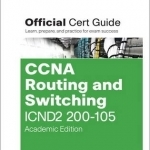
CCNA Routing and Switching ICND2 200-105 Official Cert Guide
Book
Trust the best-selling Official Cert Guide series from Cisco Press to help you learn, prepare, and...
Hadley (567 KP) rated Stranger Things: Suspicious Minds in Books
Jun 10, 2019
Although the series has more than one book, and no end in sight, Bond was only chosen to do this novel. 'Suspicious Minds' is categorized under Young Adult books, but with the heavy Vietnam content, it's not considered that many young adults today can actually relate with this story or even understand the devastating effects of a looming draft hanging over the heads of young men throughout America in the 1960's. But Bond does a wonderful job in relating the emotional state of this era through our main character, Terry. Another subject that Bond does a fantastic job of explaining in 'Suspicious Minds' is the taboo of being a pregnant, unwed mother in this era, something that seems to be making headlines again in the States nearly 60 years later.
Bond shows us a young Dr. Martin Brenner, with neatly styled brown hair and an almost unlined face, as well as a more lively Terry Ives (which only season 2 has shown a very short flashback sequence of Terry being mobile before her dreaded consequence from being associated with the human experiments). We find out that the reason Terry volunteered for the experiment is due to her father's service in WWII, and wanting to make the world a better place. Bond brings in the other important characters, who also volunteered for the experiments, quickly bonding the four as friends for life.
As far as characters go, these four are written very well. Although Terry is the main character of 'Suspicious Minds,' we get to see from the viewpoints of all people, including Brenner. Bond gives the reader a short background on what LSD is and where it came from when the time comes for the experiments to begin. Brenner doesn't really explain why he gives LSD to the volunteers, but only that it is part of a secret experiment. Even when Terry is placed in a sensory deprivation tank, he doesn't reveal anything to her, and Bond does a great job of keeping the characters enough in the grey area of knowing that it's believable. Even at one point, when Terry begins to suspect something strange from the experiments, she keeps the belief that whatever is going on at Hawkins Laboratory must be important: " 'But you can't see it's important?' Terry leaned in close, and they kept their voices down as other students walked past. 'They just called up the school and told them to give me Thursdays off and I'm getting credit for it? They're tying our grades to doing this. And no one asked any questions. They just agreed. I have to keep going.' " Bond eloquently keeps the mystery going.
This mystery is even interesting to those who know what happens in the end. In 'Stranger Things,' Terry is introduced as a comatose woman in a rocking chair- who happens to be Eleven's mother. We have never met Gloria, Alice or Ken. The three become very close to Terry, and they all somehow escape from Brenner's grasp, but they also end up joining in Terry's pursuit of getting Eleven/Jane back to her mother. Fans of the show might be left asking what happened to these three enjoyable characters? I haven't seen any plans for a part two of this story, so we may be left not knowing what happened or if the three are even still alive today (in the Stranger Things' era). Even more enjoyable is the random use of J.R.R. Tolkien's 'The Lord of the Rings,' where in one scene, Alice and Terry decide to name their small group 'The Fellowship of the Lab.' Any veteran reader will be happy to see a classic brought up in a newer book of today.
And also of interest, fans will recognize a little girl who is frequent throughout the story: Eight a.k.a. Kali. We never get to see through Kali's perspective, but the reader does get to see the multitude of her abilities. For instance, Kali is able to scare personnel in the lab by causing the hallucination of tidal waves inside the building, only to stop when Brenner (or Papa to her) gives her her favorite sweet: Hostess cakes. Other than that, Kali is like any child; she throws tantrums and rebels from her Papa, sometimes to the laughter of the reader.
One point, Terry even meets with Kali in her LSD induced state: " Terry shook her head. 'There can be. He's just a man. He can't know everything.' She paused. 'Does he hurt you? Papa?' Kali frowned, but she didn't answer. 'If he does... I can help you.' Terry had to make her understand. The little girl shook her head. 'I don't think so. I might be able to help you, though.' A field of yellow sunflowers grew up around them. A rainbow arcing over the golden tops." Terry, understandably, begins to scheme about how they can help Kali to escape the lab.
Bond does a great job of transitioning between Terry's point of view to the other characters' viewpoints. We get a young woman named Gloria, who has a secret obsession with comic books (especially X-Men). A hippie-looking man named Ken, who claims he is psychic, but just happens to have a lot of hunches that come true. And last, but not least, another young woman named Alice, who shows up in grease covered overalls and curly black hair, explaining that she works for her uncle's garage and that she loves machines. These three are delightful to read about, and the story would be boring without them.
This book was the perfect novel to answer questions fans may have had about Eleven's mother. Bond writes smoothly and easily enough that you may find yourself wanting to read just one more page before setting the book down for the evening. She drags you into the world of the 1960's and helps young readers to feel the emotional time that it was for women like Terry. But with only a few inconsistencies here and there, 'Suspicious Minds' leaves us wanting more. If you are a fan of 'Stranger Things,' I say that this is a must-read! Highly recommend!
Purple Phoenix Games (2266 KP) rated Ghoulash in Tabletop Games
Sep 3, 2019
Wait, this is Ghoulash? Ok so ditch the food and add Ghoul meat, dashes of Ghoo, some falling debris, and holes. Also add an opponent to play against and you have a recipe for a really great game. Intrigued by my recipe? Read on. This is Ghoulash.
When you name a game (and game company) using a pun for a delicious meal you just KNOW everyone is going to be making these jokes. I am not below this. However, Ghoulash pits two players against each other in a race to defeat eight Ghouls first – or die trying. This is a pencil and paper game contained on one double-sided sheet of paper (with the rules printed on the other side). With such little in components, this game CAN’T be very good, right?
DISCLAIMER: We were provided with a link to print off the game, so technically it’s a PNP for us. We printed off several copies to play our review games. I do not intend to cover every single rule included in the rule book, but will describe the overall game flow and major rule set so that our readers may get a sense of how the game plays. For more in depth rules, you may purchase a copy from the publisher directly or from your FLGS. -T
To setup a game of Ghoulash: The Game of Pen and Paper Peril (which I will be calling simply Ghoulash for the remainder of this review) grab two copies of the game sheet and two writing utensils. Though the game’s title suggests using a pen, I recommend a pencil. From here, you will need to decide which map grid you want to use for your play map and which will be your DM map. For those who have not played table top RPG’s before, a DM is a Dungeon Master – the person who ultimately runs the game and is typically in charge of placing and playing the monsters, traps, and NPCs of a game. In this case, each player will be each other’s DM. You will see the number of items that must be placed on the map on the main page. You must place (anywhere you want on the map) eight Ghouls, five Holes, five Debris, and three First-Aid Kits. Seriously. Anywhere you want. These are the items and encounters your opponent will be interacting with as you play. You are now ready to begin!
On your turn you will be moving through the map attempting to encounter and kill Ghouls – blobby monsters that want to eat you. You do this by moving onto a square that your opponent has placed a Ghoul and fighting it. Fighting Ghouls is easy: your DM opponent will circle any number on the Ghoul you are fighting. You need to guess this number in order to exploit its weak spot and vanquish it. For every incorrect guess YOU will take a wound from it bashing you. Mark your wounds on the Wound Meters area below the Ghouls. If you happen to take 12 wounds before finding a First-Aid Kit, then you die and you lose the game. Finding a First-Aid Kit, however, will relieve you of all your wounds you have suffered. In this scenario, you will begin tracking your wounds anew on the next Wound Meter on the tracker.
Like I mentioned earlier, other traps will be awaiting you in your personal hell dungeon. When you fall into a Hole you will forfeit the rest of your turn and you will skip your next turn entirely. Should you move onto a square containing Debris, you will be hit for one wound from falling bits of the rickety dungeon. Or perhaps it’s guano. You never know.
The player to defeat all eight ghouls or remain living the longest will be the winner (unless you play hardcore rules and have to defeat all Ghouls to win)!
Usually at this point in my reviews I evaluate the game components. In this case I am going to evaluate how the game art and graphic design work with and for the game. As the entire game is played on one side of one sheet of paper and everything you really need is located on that page, this is really genius to me. Everything is right there, and it’s very clear what to place on the map, how many of each thing to place, and where you can track the Ghouls, wounds, and your Ghoul trophies. It’s really great! The only negative here is we wished the letters and numbers on the x and y axes were darker. It was a little difficult for some people to read the coordinates. This would be an easy fix for me, but it may not be within the designer’s vision for the layout. Many times we were describing our movement with Battleship coordinates: I am moving south to B-1 then east to P-1 then north to P-2, etc. I didn’t have much difficulty with this, but I did hear that others did.
I believe that the intent of the future of Ghoulash is to offer pre-printed charts for sale and possibly have different themed charts to play. The eagle-eyed among you may have noticed that we were playing The City map. I have not seen any other maps, so I cannot comment on them, but even if I only had The City to play forever, I think that I would be happy enough.
That said, I believe this is a really really great game. I enjoyed being able to place out my encounter elements, and being able to freely roam around the map until I ran into something – even if it was a hole in the middle of an intersection that I had to fall through several times (sneaky, sneaky, my brilliant little brother!). The guessing game of fighting Ghouls can be quick and fun, or it can give you five wounds in one encounter. Overall, I think that anyone can enjoy it, but I will give a caveat. Both players MUST be able to read the map and coordinates to follow along with where each player is moving or else you may have some bickering. Oh, just my family? Maybe.
Purple Phoenix Games gives this one a sticky-yet-pleasing 10 / 12. You really should give it a shot. It could work with couples, friends, co-workers, strangers, pets, anyone!
Purple Phoenix Games (2266 KP) rated Posthuman in Tabletop Games
Aug 25, 2021
Posthuman is set in that dark post-apocalyptic horrorscape and is an exploration adventure game with character upgrading and dice-driven combat. The twist here is that humans are trying to escape the mutant creatures to The Fortress, a safe haven for all, but once infected may turn mutant and also turn on the party to prevent that glorious end. In this review, however, I will be playing through the solo rules, and they do not have players turning into mutants during the game. Bummer, eh?
DISCLAIMER: We are using the Kickstarter Deluxe version of the game. We do have the Defiant expansion from the KS campaign, but will not be using it for this review (I don’t think). Also, we do not intend to cover every single rule included in the rule book, but will describe the overall game flow and major rule set so that our readers may get a sense of how the game plays. For more in depth rules, you may purchase a copy from the publisher directly or from your FLGS. -T
To setup consult the rulebook, as there are so many decks of cards and character setup steps that need to happen that I just cannot detail here. Once setup your play area will look something like the photo below. Once setup is complete you are ready to begin your journey to The Fortress.
Posthuman is played over a series of rounds until the player wins or loses. The only way to win is to enter The Fortress before the Event deck runs out, and obviously the only way to lose is to run the Event deck out of cards or become a mutant by suffering five scars.
A round consists of several phases. The first phase is Event Resolution. The player will flip the top Event card and resolve its text. These Events could be a one-shot bad (or good) thing for the player, or may be an ongoing Seasonal Event that will stay in play until another Seasonal Event is drawn.
After the Events, characters will need to Eat to survive. Characters will be able to forage for food in a subsequent phase, but know that food is very important and if characters go too long without eating they will be suffering penalties of their Health and Morale.
Once fed (or starved, I suppose), the player will Declare an Action from the following: Camp, Forage, Scout, or Move (in multiplayer there is an additional action as well). To Camp players will forego any other action to heal their character. When a character Forages they will flip the current tile’s marker to show it may no longer be foraged and draw a Supplies card to see what supplies they will be able to gather. These could be more food tokens, ammo, equipment or weapons. To Scout a character will draw terrain tiles equal to the number of exits shown on their current terrain tile. The player will place the tiles however they want and this will provide insight into future locations and what they may hold. Lastly a player may Move into a connected terrain tile and begin having encounters upon it.
Most of the action in Posthuman comes as a result of having encounters on terrain tiles. Depending on where the character meeple is located on the Central Board track encounters will be drawn from the level one, two, or three decks and encountered immediately. Most of the encounters are combats, and I could write another whole post on combat, but I will spare you the details and merely say that combat is very involved and encompasses many steps to resolve. At the end of the combat a character may receive the encountered creature card as a VP trophy to be spent later on upgrades. The VP card may also instruct the player to move the meeple one space closer to The Fortress on the Central Board track. The other type of encounter card presents choices for the player to make or stat tests to overcome via die rolls.
Play continues in this fashion until the player wins by reaching The Fortress, or by losing to the forces set against them.
Components. This box is chock FULL of components and they are all super high-quality and enjoyable to play with. I do have a couple issues with some bits. Firstly, the player boards are quite small, and the tracking cubes are not meant for big meaty paws at all. Similarly, the tracking chits to be used for stats on the player board are flimsy and don’t really stay in place too well. Also the game comes with two different shades of gray player meeple colors and NOT a purple option. Shame! Shame! Shame!
When all is said and done Posthuman delivers an exciting experience on the table for a solo player and indulges the player’s need to roll dice on the regular. Just me? Didn’t think so. The combat is great, but I found myself discarding more enemies than defeating in some games and that is quite annoying. One game I refused to Scout at all and that totally bit me in the booty. So Scout, y’all.
Just know that playing this solo is NOT a cakewalk at all. I watched a playthrough video where the host won the game but nearly every roll of the die was favorable and every combat successful. Even still, she nearly ran out of time and lost the game. So games really can come down to the wire. Now, I haven’t really gotten very close to winning yet, but my day is coming!
I like this one a lot, and will certainly be going back to it for my solo plays. I have been playing some really great solo games lately, and I am very thankful for that. Posthuman, however, I don’t think will get much multiplayer action at my house. The rules are plentiful and the people I normally game with do not enjoy rules-heavy games. Similarly, I don’t think the theme is for everyone. I dig it, but different strokes and all. If you are in the market for a new (to you) game that can be played solo or multiplayer with an interesting theme and is pretty difficult, look up Posthuman. Just stay away from the mutants. These do NOT want to recruit you to their school for gifted people.
